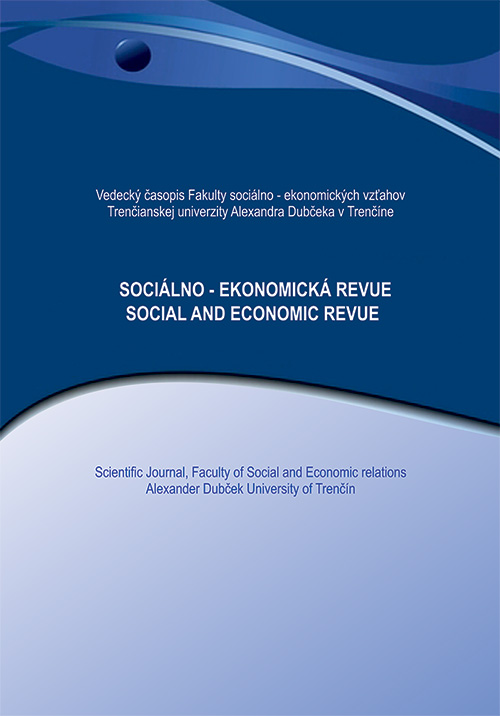BUYING BEHAVIOR AND PLANNED OBSOLESCENCE IN THE FASHION INDUSTRY
In the society of the 21st century, obsolescence as a phenomenon is all around us, it affects everyone, even if there are those who are less aware of it and do not deal with it. The aim of our study is to identify consumers' attitudes towards planned obsolescence, as well as to learn about their clothes buying habits. We conducted primary research through an online questionnaire, which was distributed using the snowball method. A total of 176 respondents participated in the research. The data analysis was carried out with the help of Microsoft Excel program. Based on our research results, the majority of respondents buy new fashion products every month or every six months. The reason for the exchange is usually that the product is no longer wearable or the customer simply wants something new. More than half of the people participating in the research fell victim to functional obsolescence as a result, but psychological obsolescence also appears. When buying new fashion products, the most important aspects are comfort and durability. On average, 34.42% of the respondents' wardrobe consists of products that are worn less often than every six months.
Release: 2022/2 Pages: 12-20 JEL classification: D10, L60, L67
DOI: https://doi.org/10.52665/ser20220202
Keywords: Buying behavior, fashion, fashion industry, fast fashion, planned obsolescence
Section:
Contacts:
Mgr. Kamilla Baša
Department of Management
Faculty of Economics and Informatics
J. Selye University
Bratislavská cesta 3322, 945 01 Komárno
basa.kamilla@student.ujs.sk
Bc. Emese Szabó Farkas
Department of Management
Faculty of Economics and Informatics
J. Selye University
Bratislavská cesta 3322, 945 01 Komárno
128624@student.ujs.sk
Literature:
Ackermann, L. (2018). Desing for product care: enhancing consumers’ repair and maintenance activities. The Desing Journal, 21 (4), 1-9.
Amberg, N. (2019). The appearance of sustainability in cosmetics companies (as examples of Unilever and L’oréal), especially eco-control as a sub-system. Acta Oeconomica Universitatis Selye, 8 (1), 21-40.
Anyakoha, C. (2018). Achieving sustainable development in nigeria via innovative education. The role of business education. Acta Oeconomica Universitatis Selye, 7 (1), 7-20.
Aranyosi, Zs. (2015). A divat-öltözék kommunikációs szerepe a 21. században. Budapest: Moholy-Nagy Művészeti Egyetem Doktori Iskola, 2015. 94. p.
Bertalan, R., Bobák, L. & Demeter, D. (2020). Mi a fast fashion üzletek versenyképességének titka? Vállalkozásfejlesztés a XXI. században 2020/1. kötet: A szervezetek reakciója és válaszai a jelen kor üzleti kihívásaira. Budapest: Óbudai Egyetem, Keleti Károly Gazdasági Kar, pp. 19-37.
Bhardwaj, V., & Fairhurst, A. (2010). Fast fashion: response to changes in the fashion industry. The International Review of Retail, Distribution and Consumer Research, 20 (1), 165–173.
Bisschop, L., Hendlin, Y., & Jaspers, J. (2022). Designed to break: planned obsolescence as corporate environmental crime. Crime, Law and Social Change, 78, 271-293.
Chen, Y., & Yang. Z. (2021). The behavioral analysis of choice difficulty states during clothing online shopping. International Journal of Clothing Science and Technology, 33 (4), 577-589.
Cooper, T. (2004). Inadequate Life? Evidence of Consumer Attitudes to Product Obsolescence. Journal of Consumer Policy, 27 (4), 421–449.
Crewe, L., & Davenport, E. (1991). The puppet-show: changing buyer-supplier relationships within clothing retailing. Transactions of the Institute for British Geogaphers, 17 (2), 183–197.
Dabóczi, G. (2012). Elavult értékek? – A tervezett elavulás és kritikája. Budapest: Budapesti Corvinus Egyetem, 47 p.
de la Motte, H., & Ostlund, A. (2022). Sustainable fashion and textile recycling. Sustainability, 14 (22), 14903.
Fels, A., Falk, B., & Schmitt, R. (2016). Social media analysis of percieved product obsolescence. Procedia CIRP, 50, 571-576.
Fogg, B. J. (2009). A behaviour model for persuasive design. Proceedings of the 4th international conference on persuasive technology. New York: Association for Computing Machinery, pp. 40-47.
Granberg, B. (1997). The quality re-evaluation process: product obsolescence in a consumer-producer interaction framework. Stockholm: University of Stockholm, Department of Economic History, 1997. 423 p.
Gyulai, I. (2013). Fenntartható fejlődés és fenntartható növekedés. Statisztikai Szemle, 91 (8-9), 797-822.
Haynes, A. (2022.). Fast fashion explained and how it impacts retail manufacturing. [acc.: 2022-11-11]. Retrieved from: https://www.investopedia. com/terms/f/fast-fashion.asp
Henninger, C. E., Alevizou, P. J., & Oates, C. J. (2016). What is sustainable fashion? Journal of Fashion Marketing and Management: An International Journal, 20 (4), 400-416.
Joy, A., Sherry, J. F., Venkatesh, A., Wang, J., & Chan, R. (2012). Fast fashion, sustainability and ethical appeal of luxury brands. Fashion Theory, 16 (3), 273-296.
Józsa, L. (2016). Marketingstratégia. Budapest: Akadémiai Kiadó, 2016. 394 p.
Kotler, P., & Keller, K. L. (2012). Marketing Management. Budapest: Akadémiai Kiadó, 2012. 894 p.
Köse, S. G., & Enginkaya, E. (2017). Fashion consumers‘ e-wom behavior: an exploratory study. European Journal of Multidisciplinary Studies, 5 (1), 479.
Lam, J. K. C., & Postle, R. (2006). Textile and apparel study chain management in Hong Kong. International Journal of Clothing Science and Technology, 18 (4), 265-277.
Machová, R., Korcsmáros, E., Esseová, M., & Marča, R. (2021). Changing trends of shopping habits and tourism during the second wave of Covid-19 – International comparison. Journal of Tourism and Services, 22 (12), 131-149.
Memon, H., Ayele, H. S., Yesuf, H. M., & Sun, L. (2022). Investigation of the physical properties of yarn produced from textile waste by optimizing their proportions. Sustainability, 14 (15), 9453.
Mihm, B. (2010). Fast fashion in a flat world: global sourcing strategies. International Business and Economics Research Journal, 6 (9), 55-63.
Miskolczi, B. (2021). Kétévente újat? Mondj nemet a tervezett elavulásra! [acc.: 2022-11-11]. Retrieved from: https://egy.hu/golfaramlat/ketevente-ujat-mondj-nemet-a-tervezett-elavulasra-109806
Özkan, M. (2017). Generation Z - the global market’s new consumers - and their consumption habits: generation Z consumption scale. European Journal of Multidisciplinary Studies. 5 (2), 222-229.
Reuss, J., & Dannoritzer, C. (2017). Vásárlás a szemétdombra: a tervezett elavulás elve. Budapest: L´Harmattan Kiadó, 2017. 240 p.
Riemens, J., Lemieux, A. A., Lamouri, S., & Garnier, L. (2021). A Delphi-Régnier study addressing the challenges of textile recycling in Europe for the fashion and apparel industry. Sustainability, 13 (21), 11700.
Satyro, W. C., Sacomano, J. B., Contador, J. C., & Telles, R. (2018). Planned obsolescence or planned resource depletion? A sustainable approach. Journal of Cleaner Production, 195, 744-752.
Schoormans, J. (2018). Routledge handbook of sustainable product desing. The Design Journal, 21 (4), 1-5.
Shotter, J. (2002). Conversational realities: constructing life through language. London: Sage Publications, 2002. 208 p.
Sille, I. (2016). Illem, etikett, protokoll. Budapest: Akadémiai Kiadó, 2016. 598 p.
Sproles, G. B. (1974). Fashion Theory: a Coneceptual Framework. Advances in Consumer Research, 1, 463-472.
Törőcsik, M. (2016). Fogyasztói magatartás. Budapest: Akadémiai Kiadó, 2016. 384 p.
Zallio, M., & Berry, D. (2017). Design and planned obsolescence. Theories and approaches for designing enabling technologies. The Design Journal, 20 (1), S3749-S3761.
Zhou, X., Meng, J., Wang, G., & Xiaoxuan, Q. (2020). A demand forecasting model based on the improved Bass model for fast fashion clothing. International Journal of Clothing Science, 33 (1), 106-121.


